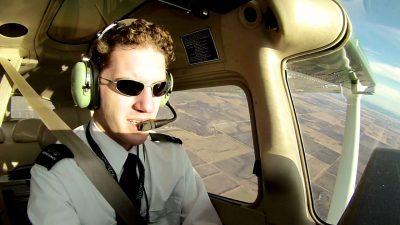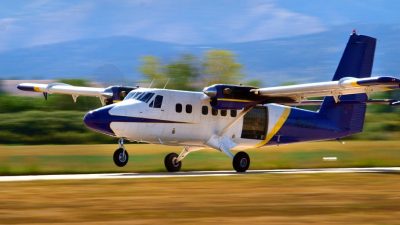Cross-country flight planning is often the first big post-solo hurdle flight students will overcome in their flight training. Planning a cross-country flight requires tedious planning and calculations if done properly which can seem overwhelming at first, but taking everything one step at a time can greatly ease the process.
The first step is to take a look at the weather along the route of flight. A good place to start for this is to look at the Area Forecast for the region the flight is going to take place. The Area Forecast gives general weather conditions over a region with outlook VFR or outlook IFR at the end of each regional breakdown. So after taking a look at the Area Forecast and confirming conditions say VFR, we’re good to go right? Not so fast, this only a quick overview. Following the Area Forecast  a student should take a look at several different weather products offered on the aviation weather website. A surface prognostic chart will show areas of any fronts at a forecasted time as well as areas of precipitation, type of precipitation, and intensity. Take special attention to any cold fronts or warm fronts moving through as this could indicate bad weather or significant changes in the wind speed. After verifying everything looks good on the surface prognostic chart we can look at airport specific forecasts. These forecasts include a METAR (Meteorological Aerodrome Report) and TAF (Terminal Aerodrome Forecast). A METAR will give current weather information at a specific airport while a TAF will give weather information forecast for a certain time at that airport within 5 miles of that airport. After checking these products you can get a general idea on what the weather will be for the flight. If the flight looks like a go from these products ask yourself if it’s within YOUR limitations. Don’t base make a go-no-go decision based on your planes limitations. Of course these are only just a few of the basic weather tools that can be used in cross-country planning, and should never be substituted for a standard weather briefing, which can be obtained by calling 1-800-WX-BRIEF.
a student should take a look at several different weather products offered on the aviation weather website. A surface prognostic chart will show areas of any fronts at a forecasted time as well as areas of precipitation, type of precipitation, and intensity. Take special attention to any cold fronts or warm fronts moving through as this could indicate bad weather or significant changes in the wind speed. After verifying everything looks good on the surface prognostic chart we can look at airport specific forecasts. These forecasts include a METAR (Meteorological Aerodrome Report) and TAF (Terminal Aerodrome Forecast). A METAR will give current weather information at a specific airport while a TAF will give weather information forecast for a certain time at that airport within 5 miles of that airport. After checking these products you can get a general idea on what the weather will be for the flight. If the flight looks like a go from these products ask yourself if it’s within YOUR limitations. Don’t base make a go-no-go decision based on your planes limitations. Of course these are only just a few of the basic weather tools that can be used in cross-country planning, and should never be substituted for a standard weather briefing, which can be obtained by calling 1-800-WX-BRIEF.
After confirming the weather will be suitable for the flight it’s time to start planning the actual flight. Up until this point you probably haven’t spent too much time reading those interesting top of climb and descent charts in that trusty POH of yours. For a cross-country flight determining these values is critical in order to ensure accurate fuel planning for the flight. You will also become new friends with that E-6B flight computer to determine fuel burn, time en-route, and density altitude. These topics are much more in depth and require one on one time with your CFI.
This is just a basic overview intended to give you an idea of what to expect on your first cross-country flight. You should always first consult with your CFI on any questions you have regarding weather or determining airplane performance.
Cross Country Flight Planning by Joe Romanko



